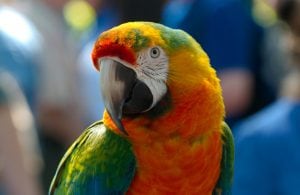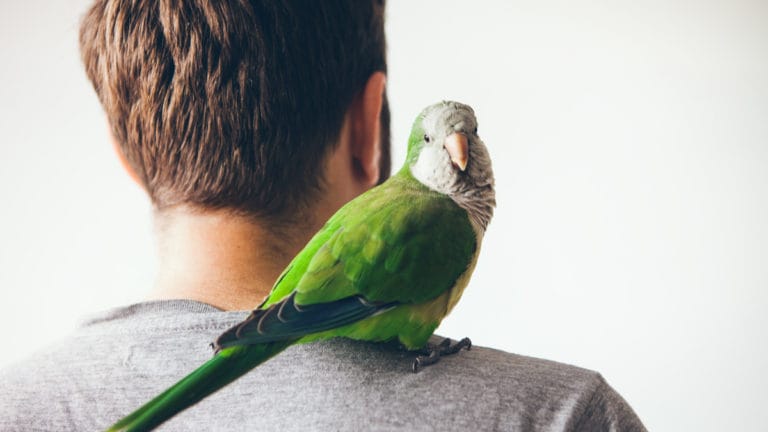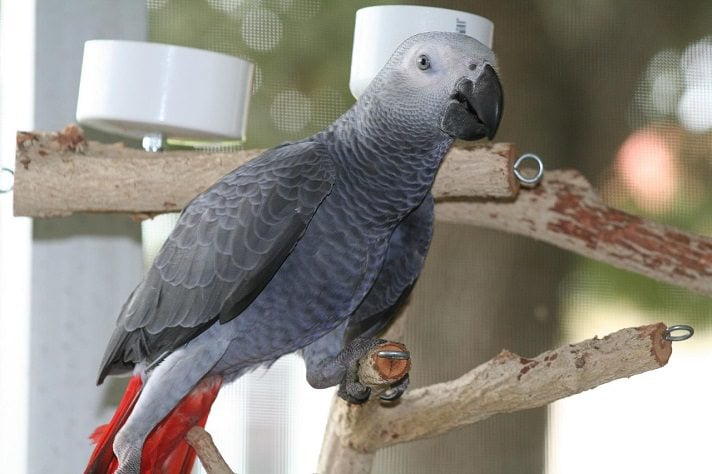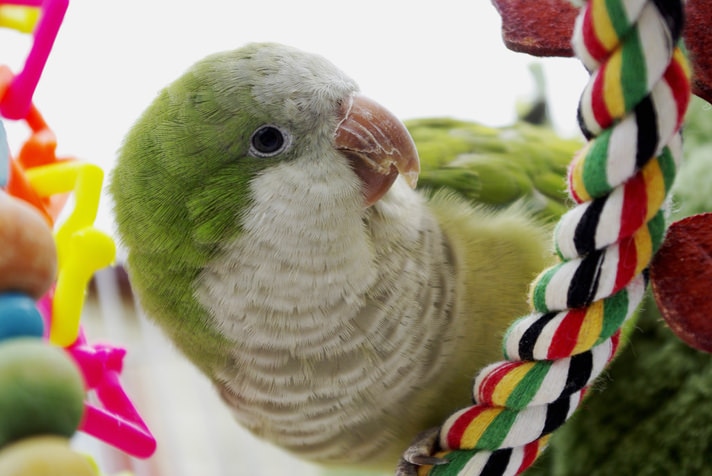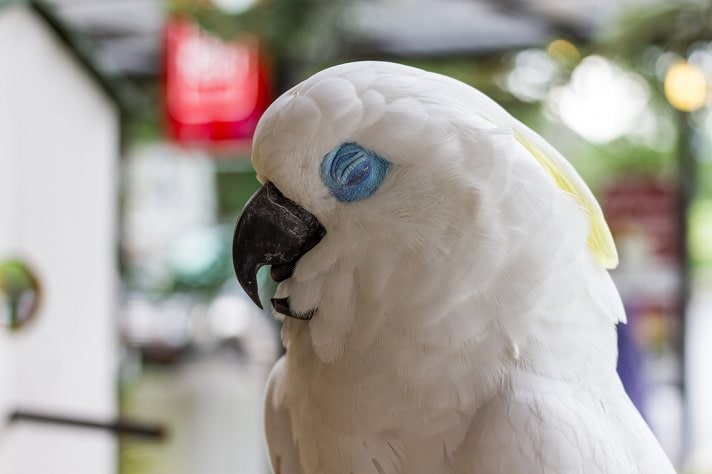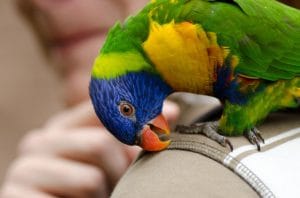“Feelings… nothing more than feelings… ” or is it? It’s one of the age-old debates: “Can and do animals feel love?” By all accounts, when one considers the definition of “love,” it does seem so, regardless of the anthropomorphists that will inevitably show up on my doorstep with flaming pitchforks after reading this. Here are three things you should know about what parrots “feel.”
1. Is It Love?
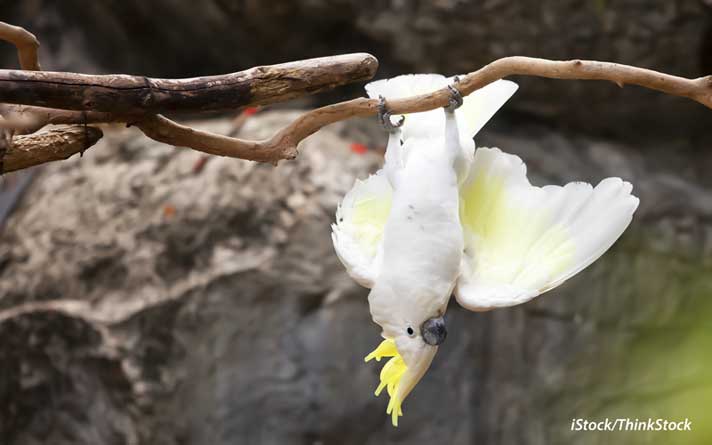
Parrots will often try to cheer us up if they sense we are unhappy.
Love includes elements of need, but mainly related to those of affection. It’s a connection to another being that inspires longing and a desire to be together. This behavior is easily observed in parrots, especially pets. However, in using the term affection or “love” in parrots, we must also take into account its evil twin: jealousy. Psittacine love can be extremely jealous, and parrots demonstrate strong preferences in the partners they choose to shower with affection… especially when they are human.
When my husband, Frank, and I first brought our Moluccan cockatoo Thor home, she would tenderly preen his beard, nibbling gently at his fingers and putting one dark, fluttering eyeball right up to his. Then she’d climb down his leg, hop across the floor, climb up my outstretched leg, fluff out all her feathers and hiss at me with all her might. Message sent, she’d hop back over to Frank, her true love and most prized possession.
While we are quite comfortable in saying that our pet parrots “love” us just as we love them, and they can be quite demonstrative in showing their affection, the evidence seems to be a little more subjective elsewhere, although I have observed evidence of close bonding in Canadian Geese. When the mate of a bonded pair was killed, the goose honked quietly to her deceased mate, refusing to leave his body. For months afterwards, several geese tried to bond with the grief-stricken goose, who spurned all offers from other members of the flock. Did the goose love her mate and feel ultimate despair at his death? It sure seemed so, given the definition. So I was left with the question: Who are we to divine, or define, whether a bond between two birds is “love” or not?
2. Empathy: It’s Not Just For Humans
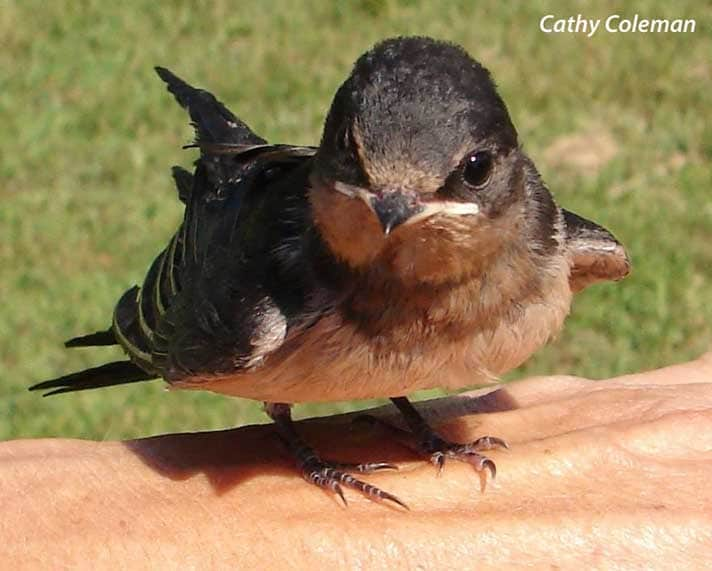
Bonds between even wild birds and humans are possible, such as between Cricket and Cathy.
Have you ever noticed that when you’ve had a bad day, or that maybe you’re just a little “blue,” that your parrot will do something that brings a smile to your face? Think it? coincidence? You might want to think again.
In the wild, parrots typically spend their lives in the safety and security of large flocks. Within the flock, there is an intricate network of “eyeballs.” Everyone watches out for each other, sometimes without even appearing to do so. Although each parrot is an individual, their connection to each other creates a perfectly unified group. When one senses danger, the entire flock reacts instantly.
Heightened perception is a life-saver for parrots. Their lives depend on it. And it’s really not much different for our parrots. Heightened perception to their human flock is how they connect themselves to our world, physically and emotionally. Regardless of how “tame” parrots are, they are still captives in our world. We control everything about their daily life: what they eat, when they eat, when they get fresh water, when their cage is cleaned, whether or not they get fresh air, whether they have companions, and whether or not they have enrichment to brighten their life. Our every movement and emotion is noted and our reactions recorded, because their instincts tell them they MUST depend on us. We inadvertently become their “flock”… even if it is only a “flock” of two.
Our parrots spend the majority of their day in close proximity to the lives we lead. They watch us and listen to us, monitoring us in silence. Sometimes we are not aware of the depth at which they perceive our thoughts and feelings, even if we don’t utter a single word.
Last summer, I raised a barn swallow hatchling that had been pushed from a high, overcrowded nest. The baby was tiny and could not compete with the larger nest mates. I named the barn swallow “Cricket” because she was so small.
When Cricket was able to fly, I would take her out of her bird cage, and give her the opportunity to try her wings out. Each time, she flew back to me and landed on my arm. On the last warm day of the season, I took Cricket out for her final flight before bringing her inside for the winter. As she was returning back to me, a whoosh of air and giant outstretched wings passed within inches of my face. A Cooper’s Hawk flew in and snatched Cricket in mid-flight two feet away from my outstretched arm. There were no words to describe my despair.
That evening, as I continued to fight back tears over Cricket, I noticed that each of our parrots were acting very differently. No matter how hard I tried to hide my despair, my parrots knew I was hiding something.
Thor sat quietly on her perch. When I offered her my arm, she declined, but held up her foot instead. I took her outstretched foot in my hand and felt her softly squeeze my fingers. “Hi Thor” she said in barely a whisper. I knew it was her way of telling me that she knew my heart was heavy.
Petrie, my timneh African grey, sat in silence as I filled up his treat bowl. When I turned to walk away, I heard him say in a soft voice, “Are you OK?” No matter how hard we try to hide it, our parrots “know”… even when we don’t want them to. What we feel is very “real” to them.
3. Sorrow
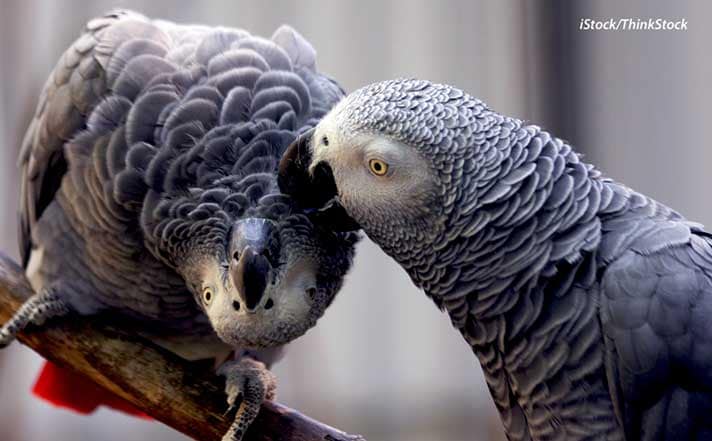
Parrots also develop close relationships with each other.
How would you feel if your best friend, whom you had spent your entire childhood with, or your mate with whom you adored for many, many years, was suddenly pulled from your life? Life continues to go on around you as though “nothing happened,” and yet no one tries to answer your questions or comfort you. This is what happens to parrots every day as siblings, paired friends or lifelong mates.
This is just as difficult when parrots who have lived their entire life in one home, with their familiar “flock” of people, have to be re-homed. This can be highly traumatic for a parrot, because they are very capable of feeling sorrow and the inevitable pain of separation. It is important for us to understand how change affects them and approach it with compassion and understanding. Parrots are very resilient and quite adaptable, but in this situation particularly, it is us who needs to be empathetic towards them.
We may never understand the complex nature of how a parrot thinks, because we cannot possibly understand what they go through as much-loved captives in our world. And perhaps it is not so much the understanding as it is the acceptance of truth that we should be aware of. Parrots accept us for who we are. They do not demand that we “change” but instead they learn to adapt.
Perhaps it is time to open our own eyes a little wider and see ourselves as they see us… and to place our heart in our hands and feel “for” them as much as they feel for us.
By: Cathy Coleman
Feature Image: D Coetzee/Flickr
Share:
